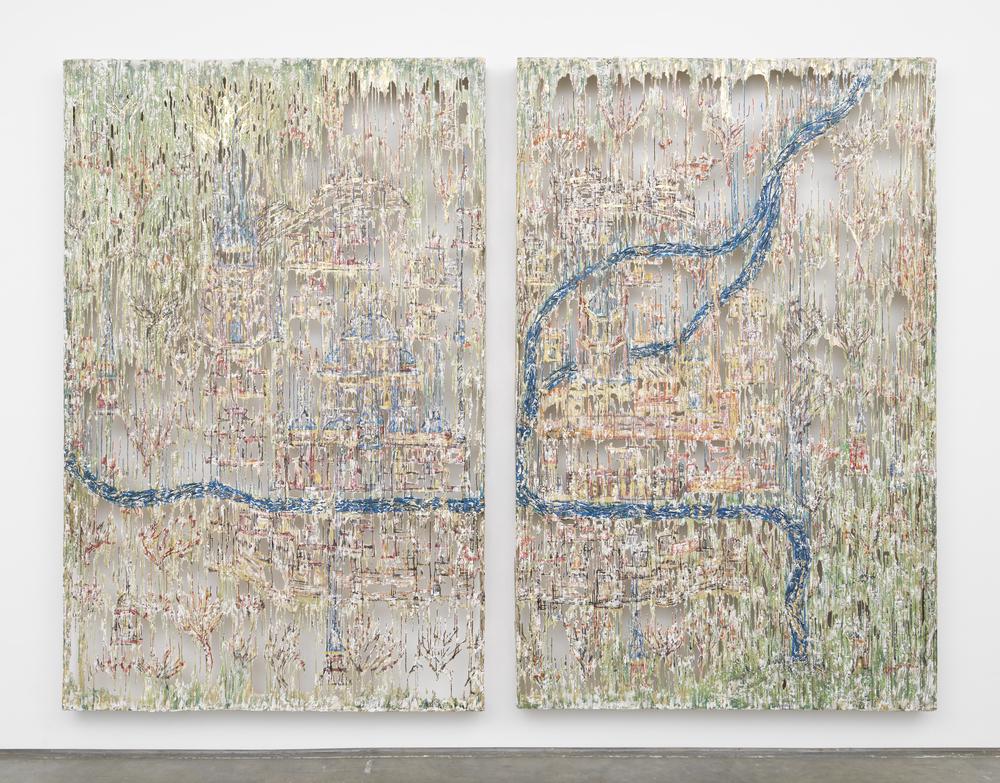Diana Al-Hadid. Fresco and Tapestry

“I work with thin layers and I work with planes and drips and puddles,” says Diana Al-Hadid.1 When making her two-dimensional works, she rotates them during fabrication so the runny polymer gypsum drips in various directions across the flat surface, creating a kind of blend of fresco and tapestry. Flat panels of dry polymer gypsum, pigmented in pastels with flashes of gold leaf, constitute both the surface and the structure of screenlike works such as South East North West (2017). With its stream of blue painter’s tape, the woven pattern resembles a city map and recalls sixteenth-century polymath and cartographer Matrakçi Nasuh’s panoramic miniatures of landscapes and urban centers across the Ottoman Empire.
Diana Al-Hadid, in Rachel Small, “Diana Al-Hadid’s Babylon,” Interview Magazine, February 6, 2014, interviewmagazine.com/art/diana-al-hadid-marianne-boesky. ↩︎